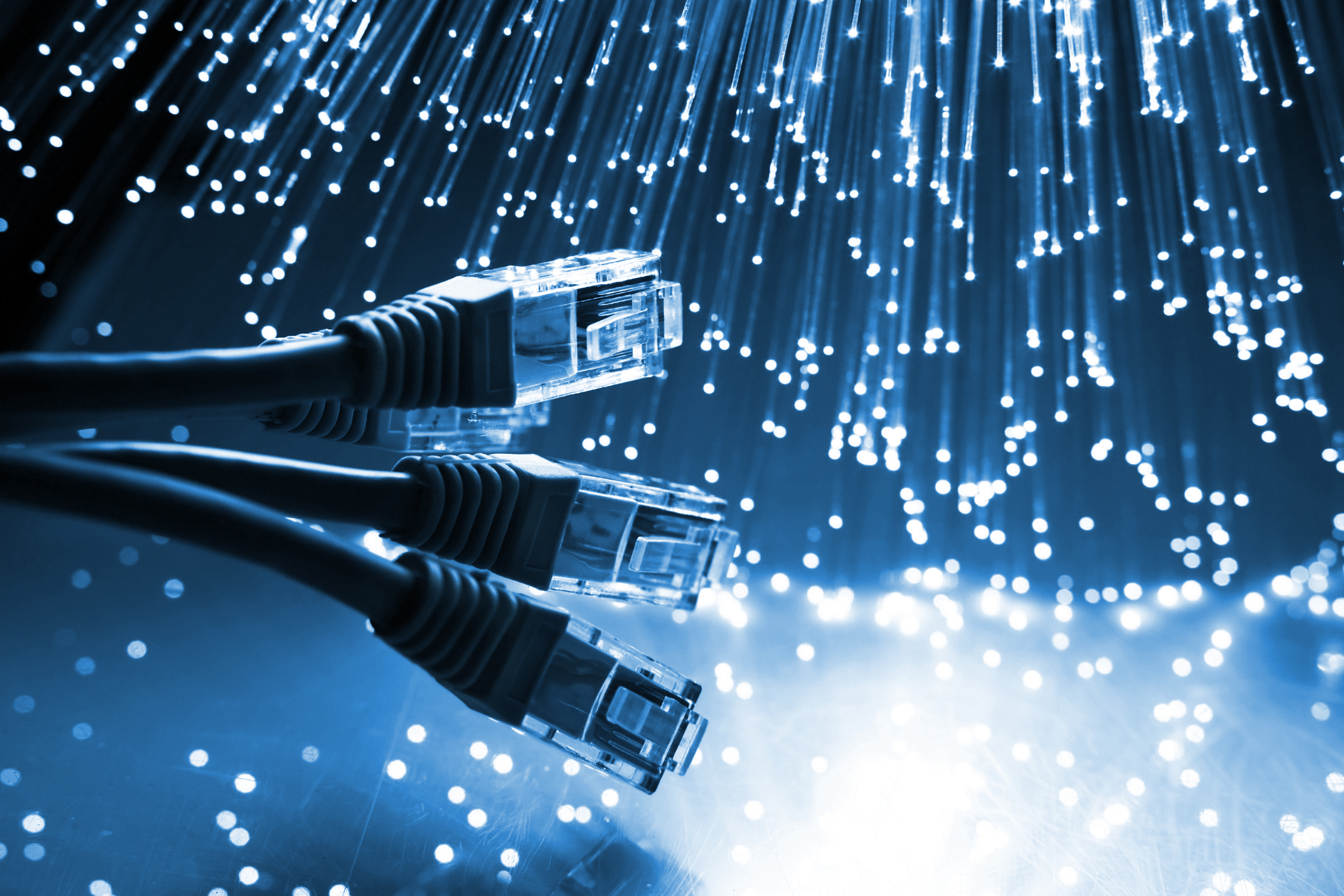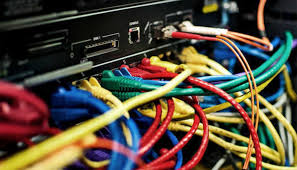Fiber optic technology has been a game-changer for businesses, offering unparalleled speed, bandwidth, and reliability. If you're considering fiber optic cable installation, this guide breaks down the process, costs, and benefits to help you make the most informed decision.
Setting up fiber optic internet for businesses (The TL;DR)
Here are some important points to remember before we get into the technical details:
-
Fiber optic internet can be up to 100 times faster than DSL, with speeds of up to 1000 Gbps. This makes it very important for modern businesses to be productive.
-
Installation costs vary based on project size and building condition. For small businesses, costs start at $1,000. Larger projects can exceed $10,000.
-
The biggest cost factor is how close the building is to the nearest lit fiber line. Buildings that are already fiber-lit have much lower installation costs.
-
If there are conduits, space in the telco closet, and enough power supplies, the installation will be easier and cheaper.
-
Fiber optic cables are safer, need less upkeep, and last longer than copper cables, which makes up for the higher initial cost.
-
Choosing local providers often lowers costs and speeds up permits. Adding extra paths to the building makes it more reliable but costs more.
This guide goes over the costs, benefits, and other factors of installing fiber optic cables. It shows why investing now can make the internet faster, more reliable, and safer in the future. If your current connection already meets your business needs, you probably don't need to change how you work.

Introduction to Fiber Optic Internet
Fiber optic internet, often known simply as "fiber," utilizes thin strands of either glass or plastic, known as fiber optic cables, to transmit data as pulses of light. This technology, which can deliver data at speeds up to a whopping 1000 Gbps, has become increasingly popular for both residential and commercial uses.
Why the popularity surge? It's simple: fiber optic internet is fast, efficient, and reliable. Plus, with the increasing reliance on cloud-based applications and remote work, businesses now need an internet connection that can keep up.

The Need for Fiber Optic Internet in Businesses
In today's world, where everything is connected, fast internet isn't a luxury, it's a need. Fiber optics can be especially helpful for businesses that do a lot of business online, like e-commerce, healthcare, education, and more.
Fiber optic networks can be up to 100 times faster than regular DSL, which boosts productivity. Also, they are less likely to be affected by bad weather or other problems, which means that your business can stay connected and running even when things are bad.
Businesses can also get an edge over their competitors by switching to fiber optic. As we rely more and more on the internet, having a fast, reliable connection is no longer a choice; it's a need.
The Cost of Fiber Optic Internet Installation in a Commercial Building
Fiber optics have changed the way businesses work. It has the best speed, bandwidth, and reliability of any service. This guide will help you pick the best way to install fiber optic cable. We'll go over the steps, costs, and benefits.
Cost of Fiber Optic Cabling
The physical fiber itself can range from $1 to $6 per foot, depending on the fiber count you require. For instance, a 288-count fiber might cost around $32,000 per mile.
Fiber Optic Installation Costs
The cost of installation can change depending on how big and complicated the project is. It could cost about $1,000 for a small business and more than $10,000 for a big business. This price usually includes running the fiber optic cable from the street to the business, connecting it to an existing network, and setting up the equipment.

Factors Influencing the Cost of Installing Fiber Optic Internet
Let's connect deeper into the factors that can affect the cost of aerial fiber optic cable installation:
Proximity to the Nearest Lit Fiber
This is perhaps the most crucial factor. If your building is already fiber-lit, meaning fiber facilities are installed in the building and connected to a provider’s network, the installation charge will be significantly lower. But if it's not, you'll need to find out the nearest access point, the closer, the cheaper.
Existing Conduit in the Building
If your building already has a conduit to house the optical fiber, it would lower the installation cost. However, ensure that the inner duct has enough space to pass additional cables through.
Service Provider
The fiber optic cabling cost also depends largely on the service provider you choose. Local service providers often offer more reasonable quotes than national providers. Plus, local providers are usually more efficient in obtaining the required permit from local authorities.
Physical Obstacles
The installation cost can rise if there are physical obstacles like highways, rivers, or preserved sites between your building and the nearest fiber connection point.

Space in the Telco Closets
Telco closets, or telecommunication closets, are small rooms where your network systems and devices are stored. You need to ensure your telco closets have enough space for the fiber cable hardware.
Power Requirements
Ensure that your telco closets can support the power requirement for your network. Also, consider having a backup generator for power outages.
Different Paths to the Building
For redundancy, it's ideal to have multiple entrances for fiber into your building. While this increases the cost, it mitigates potential outages by connecting to a separate location before heading into your building.

Deciding to Wire Your Commercial Building with Fiber Optic
At first, it might seem like a lot of money to spend on fiber optic internet. But its long-term benefits are very clear. Fiber optic cables are more reliable and last longer than copper wires. You can focus on what's important because they don't need as much care. Also, safety is a big plus because unauthorized access requires physical tampering, which causes immediate problems. Every day, fiber keeps you connected and safe, and the service is always smooth.
How to Start Installing Fiber Optics
Now that you know all of this, how do you begin putting in fiber optic cables? The first thing you should do is get in touch with a reliable service provider like Infinium. Our team at Infinium can help you through the process, look at your specific location and needs, and give you a quote that is right for you. building with fiber

Conclusion
In today's digital world, wiring your business building with fiber optic connections isn't just an upgrade; it's a must if you want to stay competitive. The process of installing may seem hard and expensive, but keep in mind the long-term benefits: faster speeds, more reliable connections, higher productivity, and lower maintenance costs. Are you ready to jump into the future with a fiber optic network? Call Infinium today to talk about how we can help your business grow.